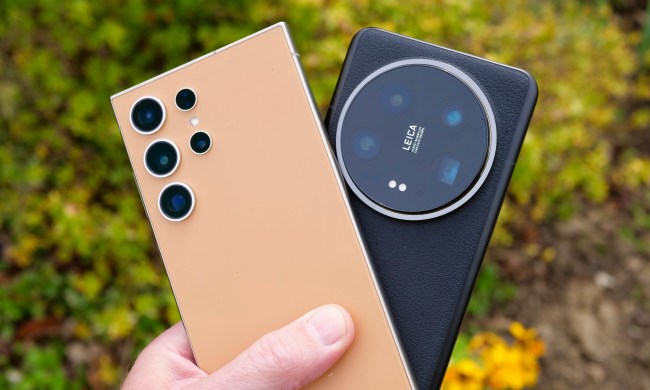Cameras in phones are ubiquitous. Few of us see the need to carry a dedicated device for taking photos or videos anymore, and digital camera sales have slumped. But how did we get here? Let’s take a look at the history of the camera phone.
Samsung Sharp built the first camera phone
The first cell phone with a built-in camera was manufactured by Samsung and released in South Korea in June of 2000. The SCH-V200 flipped open to reveal a 1.5-inch TFT-LCD, and the built-in digital camera was capable of taking 20 photos at 350,000-pixel resolution, which is 0.35-megapixels, but you had to hook it up to a computer to get your photos. The camera and the phone components were essentially separate devices housed in the same body.


First U.S. camera phone – Sanyo SCP-5300

By the end of 2003, camera phones were really taking off in the U.S. and over 80 million had already been sold worldwide. We even covered the trend by reporting that camera phones rival DVD players sales back in November 2003. The good news for consumers was that quality was rising and prices were dropping.
1.3MP arrives with Audiovox PM8920

By the end of 2004 the camera phone was riding high. Canalys reported that over half of the phones sold worldwide in the first 9 months of 2004 had cameras in them, and two-thirds of all the phones shipped in the third quarter were camera phones. Leading the way was Finnish manufacturer, Nokia.
2MP in the Nokia N90

Sony steps it up

Nokia naturally retaliated with models like the 3.2MP N73, but in 2007 the feature phone reached its pinnacle.
5MP in the Nokia N95

To put it in perspective, the original iPhone hit the market a few months after the N95, in June 2007, and it had a 2MP camera with no flash or auto-focus and no video recording capability.
8MP from Samsung

In 2008 the Samsung i8510, also known as the INNOV8, held the first 8MP camera to hit the market, but in design terms Samsung was copying the wrong company. This release looked like part of Nokia’s N range, but these designs were growing steadily less popular. Nokia followed suit with the N86, but it was LG that released the first touchscreen camera phone with an 8MP camera. It was called the LG Renoir.
The race for megapixels continued and Samsung hit 12MP first with the M8910 Pixon12 in 2009. It was soon bested by Nokia’s N8 in 2010 and the 16MP Sony Ericsson S006 at the end of the year.
Smartphones stall the camera’s progress

3D flop

Most manufacturers seemed to be getting the message. The focus was shifting to software features that would offer extra value for people interested in photography.
The rise of software features for cameras

We’ve had Photo Sphere from Google and Panorama mode from Apple. BlackBerry came up with Time Shift and there was the oddly-named Zoe from HTC. We’ve also seen more filters and effects baked into the various mobile platforms, but these are largely things that apps have offered for a long time now. They’re great for people who want to spend the time getting into them, but most of us forget those kinds of novelties pretty quickly. What we really want is good point-and-shoot functionality to capture life in all its spontaneous glory.
Bigger and better
As HTC tries to convince us that a 4-megapixel camera is enough in its HTC One, Nokia is re-igniting the battle with a typically ferocious assault. High-end smartphones, like Sony’s Xperia Z are maxing out at 13-megapixels. Even Samsung’s camera focused S4 variant, the Zoom, only has a 16-megapixel sensor (although the optical zoom is its key feature). The Nokia Lumia 1020 has a 41-megapixel camera in it. This is how it compares to the iPhone 5 (the photo on the left is mislabeled as iPhone 4).

Whether we actually need the cameras in our phones to be too much better than they are now is debatable, but you could say that about a lot of tech. The Chicago Sun-Times publicly sacked photographers and expects iPhone-toting reporters to take their own photos. That may not be the wisest decision, but the fuss it generated was more focused on the skills of the photographer than the equipment. It’s not unusual for a professional photographer to use an iPhone, and it’s far from the most powerful camera phone on the market.
The future for camera phones
The Lumia 1020 looks set to be the best camera phone on the market for some time to come. It’s worth mentioning that Nokia’s first 41-megapixel camera phone was the PureView 808 in early 2012, but because it was stuck on Nokia’s old Symbian smartphone OS (the same one as the N95), sales were nothing special. Windows Phone is a lot better, but it remains to be seen how many people will be tempted in. In any case, you can be certain that the camera phone war is far from over. Things are just heating up, in fact. Samsung’s Galaxy S4 Zoom is coming and the Sony i1 could be a contender later this year.


